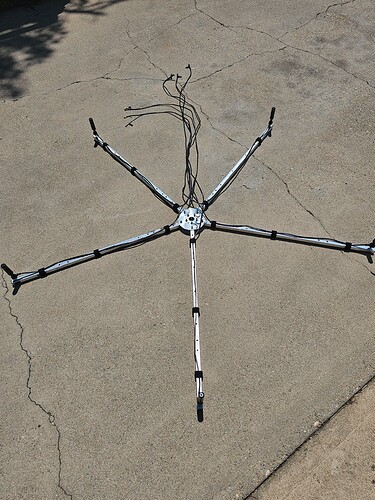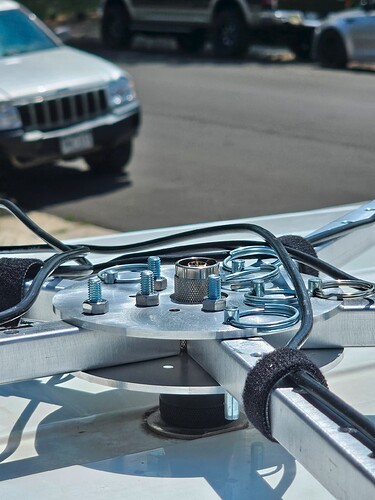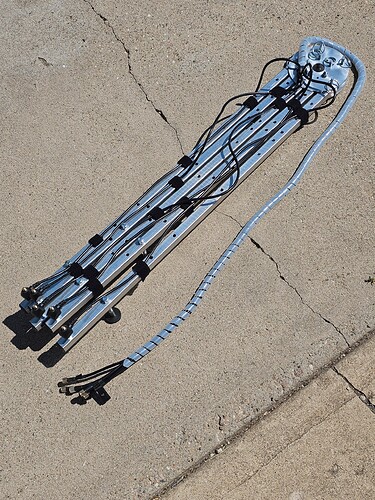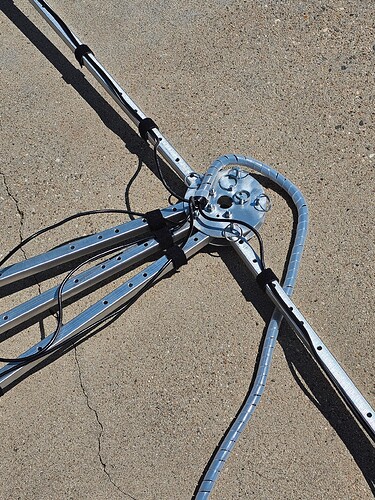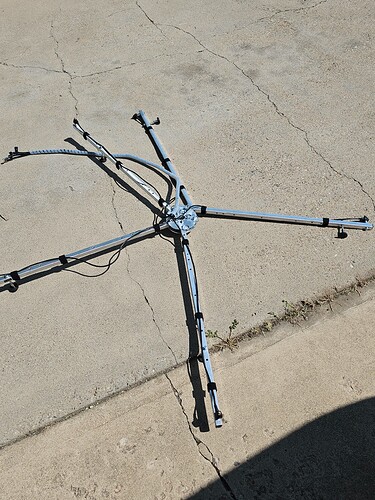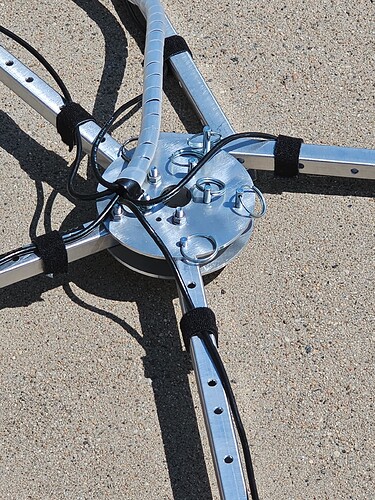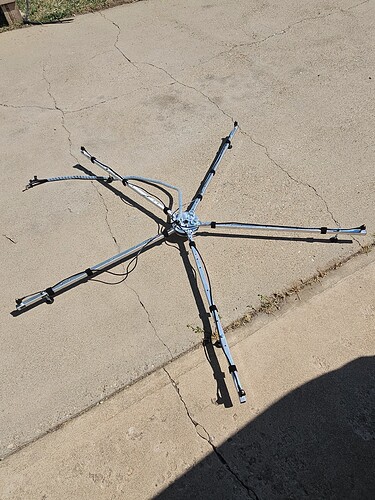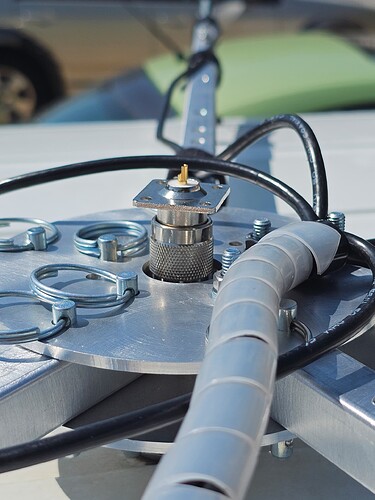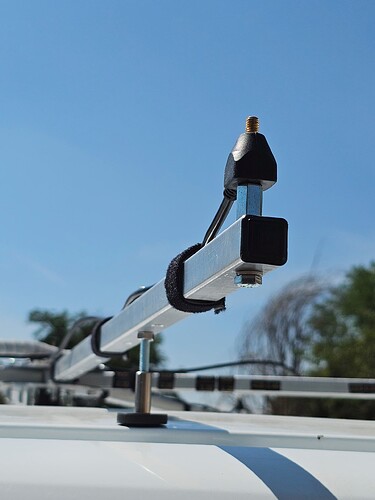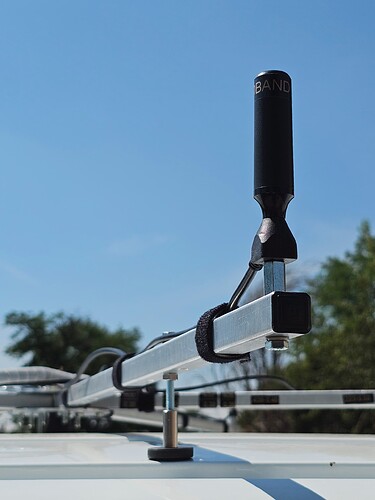I’d like to do a write up on this for the group. In short, I gave up on the whole template etc idea because it’s a bit clunky and time consuming, and my roof has ripples which make a lot of antenna positions untenable.
What I did was to decouple the two problems. 1: I need the antennas mounted in positions that work for the Kraken at the frequency of interest. 2: I need the antennas mounted where there’s sufficient flat space for the antennas. 3: (no-one expects the spanish inquisition!) I need whatever I come up with to be easy to deploy and stow.
So here’s what I did, the short version: Start with the Arrow Kraken antenna mount, but don’t use any of their antennas. Leave off all the parts for mounting to the mast. You’re left with two circular plates, and five arms, and ancillary hardware. Take an existing set of five antennas for the Kraken which have interchangable antenna elements on mag mount bases.
Some hardware later (which I will explain in full writeup) I have a folding array that mounts SECURELY to the car, and can be deployed or stowed in less than a minute.
Not quite final version shown in pic:
